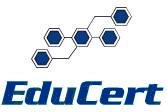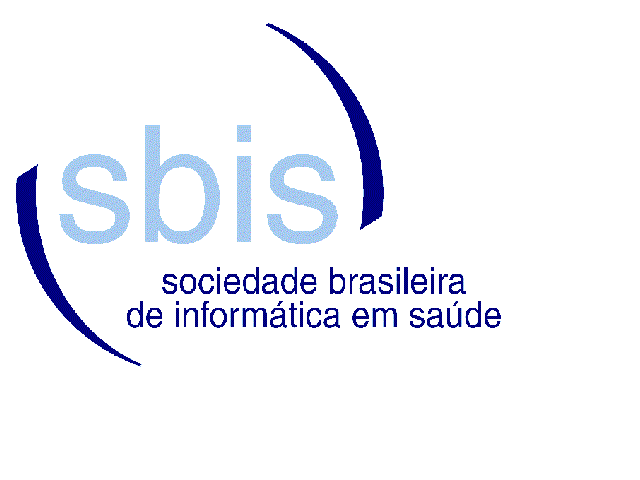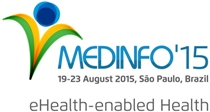
Supported by:
Tutorial
Certification
Standards and Processes for Electronic
Health Record Systems: Security,
Confidentiality and Quality
São Paulo, Brazil
Thursday 20 August 2015
9:00 to 11:30 AM
Frei Caneca Convention Center
 Aims
Aims
Vendor- and developer-independent audits and certification standards and processes are an essential component of the adoption culture of Electronic Health Record Systems (EHR-S). Countries vary widely on whether certification programs for EHR-S are in place, and what and how certication compliance is assured and certificates issued. In this tutorial we intend to identify the reasons for, advantages, issues and methodology in EHR-S certification, compare some national certification programs, such as in the USA and in Brazil, and instruct on how to assemble such a national program and how to prepare your EHR-S for certification in different scenarios, including the use of digital certificates and signatures.
The tutorial aims to present the scope and requirements for mandatory compliance of EHR-S to structure, functionality, contents, information security and protection, patient safety, data quality, interoperability, etc. International (e.g. ISO) and national (e.g. USA HIT ONC) published and consensus-based standards which are used in certification processes.
 Target
Public and Pre-Requisites
Target
Public and Pre-Requisites
Electronic Health Record Systems developers and managers. quality assurance and information security, protection and confidentiality professionals and students; innovation, development, implementation and standards and software certification compliance leaders in EHR-S providers; clinical users interested in the area of healthcare software certification and compliance, quality assurance, patient safety and confidentiality, among others.
A prior basic knowledge of EHR and EHR systems is recommended, in order to understand better the topics covered by the tutorial, as well as fundamental aspects of information standards in health, computer security and software quality. No prior knowledge of software certification processes is required.
Idiom: The tutorial will be delivered in English, so a fluent comprehension is fundamental
 Program
Program
The course covered the following topics:
- Introduction and aims of certification of EHR-S
- International and national standards for EHR-S: how they are built and published and by whom, how and where they are adopted
- The scope of EHR-S certification
- Information security, integrity, protection and authentication.
- Levels of certification assurance;
- EHR architecture, demographic and clinical data contents, data representation and coding standards;
- EHR functionalities for the clinical applications;
- EHR interoperability standards and functionalities;
- The specification of requirements for certification
- Types and levels of certification;
- Testing procedures for requirements compliance
- The issuance and use of EHR-S certificates;
- Comparison of certification systems in several countries;
- The specific case and experience in healthcare software certification in Brazil;
- The use of digital certificates, a PKI structure and adoption by physicians for use with EHR-S;
- Current results (Comparison of USA and Brazil, as examples);
- How to set up a national EHR-S certification program;
- How to prepare your software for a certification process;
- Training and education in Healthcare Software Certification (the EduCert Program as an example).
- Other specific cases for certification: mobile applications, embedded applications, clinical decision support. American FDA and the certification conundrum
- Conclusions and recommendations
At the end of this tutorial it is expected that the attendees will be able to:
- Understand the aims, history, rationale, and advantages of EHR-S certification
- List the main health information and system standards on which most certification programs are based
- Identify the diverse scopes and contents of EHR-S certification requirements, and how they are tested and assured as to compliance
- Discuss the main EHR-S certification processes in different countries
- Understand the requirements for establishing a national certification process
- Identify the steps and requirements for preparing a EHR-S for certification
- List information and educational resources in order to learn more about healthcare software certification
 Teaching
Methods
Teaching
Methods
The tutorial will
be based on presentations based on projected slides,
PDF documents and demonstration of software. A website will be open to
all participants with copies of the slides, articles, examples, cases
and documents related to the explanations, links to relevant and
interesting sites and on-line presentations and videos, as well as an
on-line forum and email exchange for off-class questions and
discussions.Upon presence in the course, all participants will get the address to access the course's e-learning web-based environment (Moodle), totally in English. This environment provides access to all features, functions and instructional material, including:
- Recommended bibliography
- Copy
of slides used by the instructor
- Copies of study guides and papers
- List of Internet resources and recommended links
- List of participants with addresses and personal data
- Webforum for questions and discussions
- And many more
 Prof.
Dr. Renato
M.E. Sabbatini,
PhD
Prof.
Dr. Renato
M.E. Sabbatini,
PhD
Prof.
Renato M.E.
Sabbatini is a university associate professor and
researcher in biomedical and health informatics since 1972, having
founded and lead several groups and centers in the area. He has an
extensive experience in the area of clinical health care software
standards and certification processes, and has been active as a major
technical consultant in Brazil to companies and institutions wishing to
acquire certification for their systems according to the joint
requirements of the Brazilian Society of Health Informatics and the
Federal Council of Medicine. Furthermore, he is active in the education
and training in the area, as the creator and chairman of the pioneering
EduCert Program for Training and Education of Consultants and Auditors
in Software Certification, which has created and offered many courses
on the subject. As a member and director of HL7 Brazil and IHE Brazil,
he has been active in the design and implementation of new
certification processes.
Website: http://renato.sabbatini.com
Email:
renato@sabbatini.com
 Venue
Venue
Frei Caneca Convention Center Rua Frei Caneca, 569 – Consolação
São Paulo – SP, Brazil
Phone: +55 (11) 3472-2020
One of the city’s most renowned venues,, it offers distinguished infrastructure, comfort, security and excellent location.
The venue is totally integrated into the Frei Caneca Shopping Center, which offers diversified food options, services and 1.000 covered parking spaces.
See the location map
 Fees and Enrollment
Fees and Enrollment
A single enrollment fee of
US$ 100 is required by the registrar, in the MEDINFO 2015
organization.
Only MEDINFO participants can register for tutorials;
Course in Portuguese
 Unable
to attend? Language is a problem?
Unable
to attend? Language is a problem?
Professor Sabbatini offers a
longer, more detailed, two days, face-to-face course in Portuguese by
the
Edumed Institute, as part of the EduCert Education for Certification
Program.
 Click
here for more information
Click
here for more information
Next course: 12-13 September 2015, in Campinas, Brazil.
Certification Consulting
![]() Sabbatini
Associate Consultants LLC provides consulting for development of secure
EHR and prepares software developers to obtain the certificate for EHR
security, confidentiality and quality according the Brazilian Society
of Health Informatics and the Federal Council of Medicine. Please
contact us for details.
Sabbatini
Associate Consultants LLC provides consulting for development of secure
EHR and prepares software developers to obtain the certificate for EHR
security, confidentiality and quality according the Brazilian Society
of Health Informatics and the Federal Council of Medicine. Please
contact us for details.
Updated 14/Aug/2015
contato@edumed.org.br



